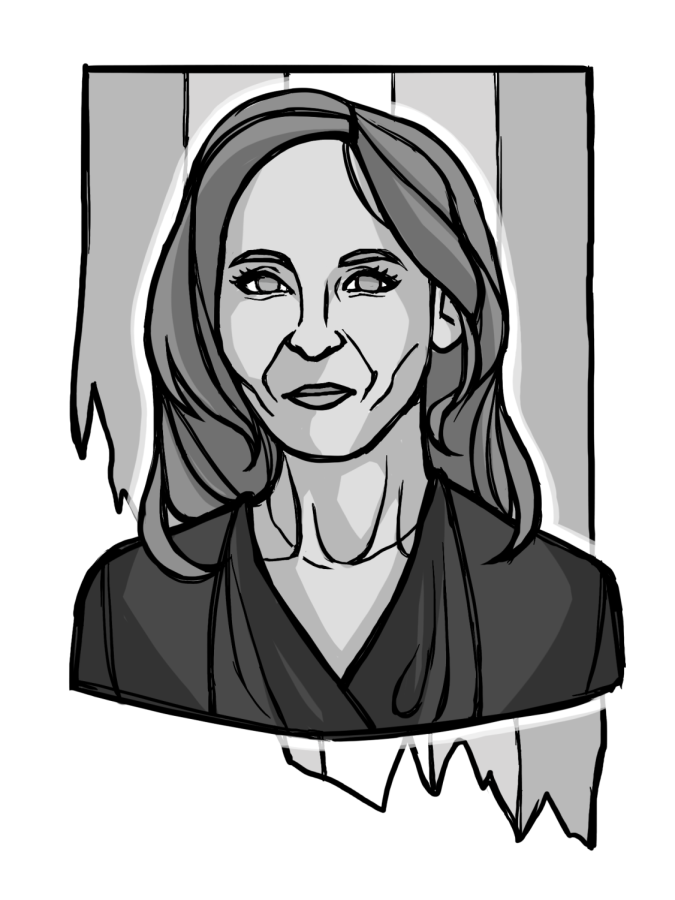A&E: The art vs. the artist: the J.K. Rowling debate
The “Harry Potter” Franchise is everywhere. Libraries, movie theaters, video games, posters, billboards and the hands of many children searching for stories of magic and adventure. In recent years, however, the series author, J.K. Rowling, has been called out for her controversial views on gender and race, causing many to question whether to support her and her work.
Freshman Laasya Pandravada was introduced to the “Harry Potter” series at a young age. She recalled being enticed by the magical storylines and progression of the novels.
“Most of us read it in elementary school. It opened up a different world,” Pandravada said. “It started out shorter, so you could continue as you read it from younger to older because the first few books are pretty short, and then towards the end, they get longer and the story gets more complex.”
Like Pandravada, English teacher Arantxa Figueroa grew up reading “Harry Potter.” When she was younger she enjoyed reading the books, but as an adult, Figueroa realized that the series lacked a lot of representation.
“I’m Mexican. I’m Latin American. I speak Spanish. I grew up in a Hispanic household, Hispanic community, and even though I enjoyed reading books of magic and wonder and fantasy, I would often ask myself, ‘Who in the book looks like me, or talks like me, or acts like me?’” Figueroa said. “It wasn’t until I was older that I realized there wasn’t a single Hispanic person in all of ‘Harry Potter,’ and when I got older and I started to notice people criticizing and critiquing the lack of representation in her books, I realized that there were other franchises with better representation and better themes.”
Sophomore Kai Vader pointed out that in addition to a lack of representation, there are also multiple stereotypes present in Rowling’s work. He explained that many of these stereotypes harmfully represent communities.
“There’s the little goblins at the Gringotts Bank, which are really obviously meant to be caricatures of Jewish people. There’s two Asian characters. One of them is a villian, and the other one’s name is Cho Chang, which is two last names. It’s not a name that would actually exist,” Vader said. “There’s a gang of villains at one point, and in the movie, they are all portrayed by Black people, and none of the other main characters that are good are Black people, or people of color at all.”
Pandravada additionally mentioned that in later books and play adaptations of the “Harry Potter” series, Rowling had changed the character Hermione’s race multiple times. She explained that constantly changing her identity was harmful to the communities Rowling was attempting to represent.
“They have a lot of characters that are diverse but they’re not focusing on them, so I feel like you already have that so use that as a stepping stone instead of changing your main cast,” Pandravada said.
In addition to issues with racial representation within the series, Vader also pointed out that Rowling has controversial political views as a public figure. He explained that her views in support of “trans exclusionary radical feminism” are harmful to transgender people and degrade feminism as a movement.
“It’s a really extreme subcategory of feminism,” Vader said. “I think it (Rowling’s views on feminism) is kind of embarrassing for actual feminists. I think that they (transgender females) go through—if not more struggles than women, and I think it’s just so wrong to exclude them from that group because they were not assigned female at birth. They go through the same struggles, if not even more struggles.”
Figueroa believes that Rowling should educate herself further on gender relevance before voicing her opinions. She points out that information on the topic is readily available.
“I think it’s total hate because there are so many opportunities for people to learn about theoretical approaches to gender and trans identities, but there are also a lot of modern day stories,” Figueroa said. “You can watch two minutes on TikTok that explains the content. You can follow a YouTuber who links fashion trends to theoretical approaches.”
As an English teacher, Figueroa has taught books from the “Harry Potter” series in the past but will no longer teach them as she believes there are better alternatives. She hopes that teachers who continue to teach the “Harry Potter” books will educate their students about issues within the books.
“It’s all up to choice ultimately as a teacher, but if you’re going to teach ‘Harry Potter,’ it’s important to point out the discrepancies in characters,” Figueroa said. “I’m not going to teach it again. But I think if you were to teach it, I think you definitely owe it to your students to point out the problems.”
Pandravada explained that Rowling has a diverse fanbase, and that the popularity of the “Harry Potter” series has given Rowling a large audience. She advocated that Rowling should be conscious about the effect her opinions have on her audience.
“She doesn’t accept certain communities, but those communities have loved her book for a long time,” Pandravada said. “That makes certain communities not feel as connected, and it also makes them doubt whether they like the book or not. It’s the author that is the problem, but the book is still great.”
The question of whether to separate the art from the artist is a consistently controversial one that continues to be heavily debated. With J.K. Rowling’s widely beloved works, many feel conflicted about whether to support her, or her franchises.
“The story is a story of wonder, but at what cost?” Figueroa said. I don’t think the cost outweighs the harm. I don’t think the harm that she’s done outweighs the benefit of reading a fantasy story.”


